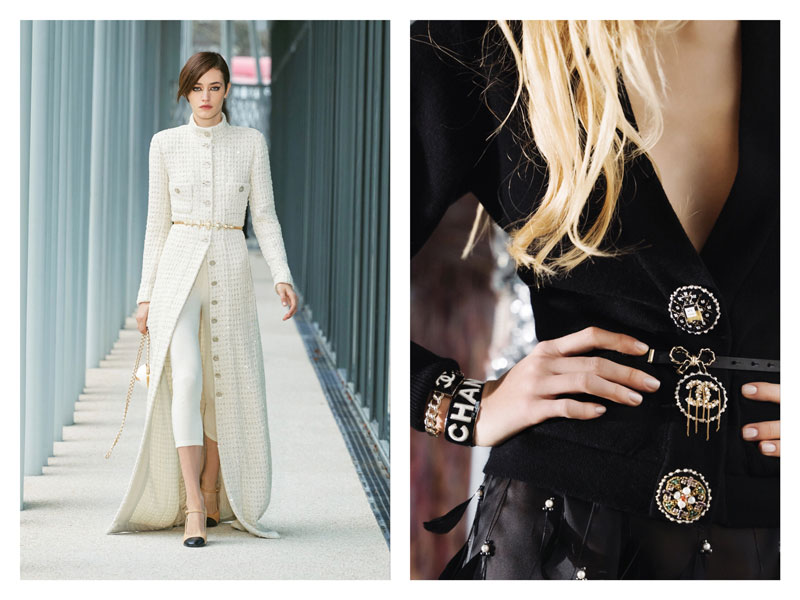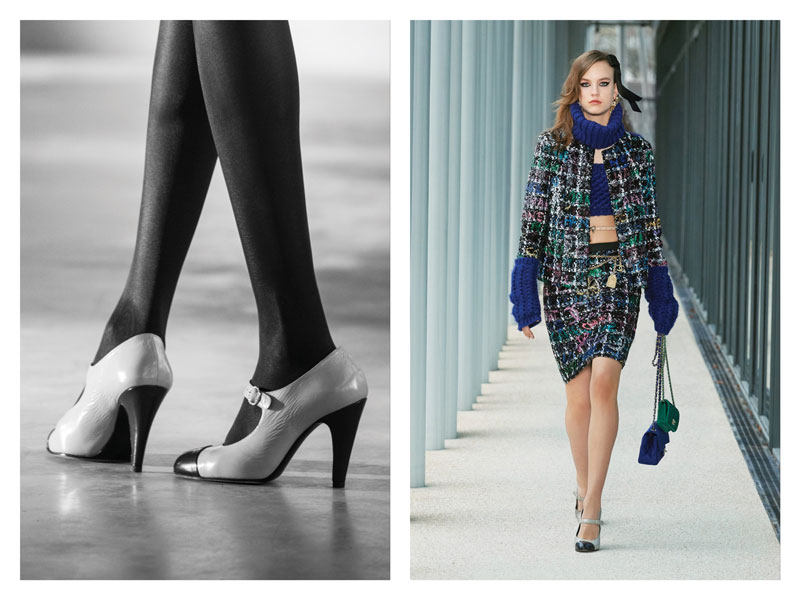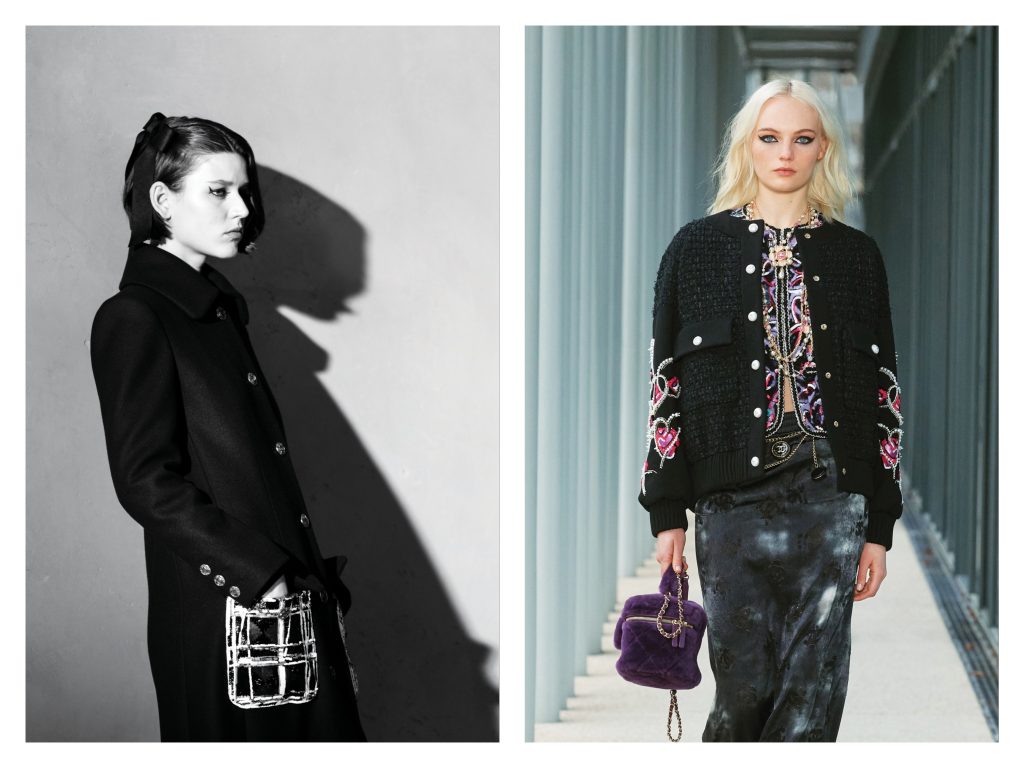CHANEL’s annual Métiers d’art show celebrates the hundreds of embroiderers, feather workers, pleaters, and other Parisian ateliers that bring its couture creations to fruition. For the 2021/22 collection, this highly anticipated event gained a magnificent new venue, le19M.
Located between the municipality of Aubervilliers and the 19th arrondissement of Paris, the innovative triangular-shaped le19M building was designed by architect Rudy Ricciotti as a multidisciplinary space. Adorned with a white concrete façade, it has a garden and elegant walking paths that encourage calm and collaboration.

The venue houses workspaces and galleries for eight of CHANEL’s Maisons d’art ateliers, including embroiderers Lesage and Atelier Montex, goldsmith Goossens, shoemaker Massaro, and more. It was only natural for this vast, light-filled interior to become the backdrop to CHANEL’s latest Métiers d’art show.
This year’s spectacular collection brought to light these ateliers in a metropolitan collection with a youthful edge. In this article, we invite you to discover the heritage of these eight artisans and the exquisitely detailed looks they brought to the collection.

DESRUES
PARURIER D’ART SINCE 1929
Desrues, the first House to join the Métiers d’art in 1985, produced the collection’s precious metalwork. Among its creations are jewelled buttons for jackets and cardigans, belt buckles, clasps, and jewellery pieces. Artisans in the village of Plailly worked to craft the metal pieces by hand or by using innovative 3D printing technology.

LEMARIÉ
FEATHER WORKER SINCE 1880 AND FLOWER MAKER
Founded in 1880, feather and flower maker Lemarié is the master behind CHANEL’s emblematic camellias. For the latest Métiers d’art show, Lemarié artists handsorted and assembled the feathers that covered the skirts and jackets. They also wove and glued the floral embellishments one petal at a time.

GOOSSENS
GOLDSMITH SINCE 1950
The House of Goossens began its relationship with CHANEL in 1954 when founder Robert Goossens recreated Byzantine jewellery for Gabrielle Chanel. Chain belts and layered necklaces sparkled in this latest collection, a testament to the goldsmith’s exacting precision and meticulous workmanship.

MASSARO
SHOEMAKER SINCE 1894
CHANEL’s trademark two-tone shoe made its appearance on the catwalk courtesy of shoemaker Massaro whose collaboration with CHANEL began in 1957. Preserving shoemaking traditions since 1894, every pair of Massaro shoes is handcrafted to achieve both elegance and comfort.

MAISON MICHEL
HATTER AND MILLINER SINCE 1936
Sleek, structured black brims and slim fedoras capped heads at the show, with milliner Maison Michel carrying on its centuries-old French hat-making legacy. To prepare for the collection, the atelier’s artisans handcrafted the caps and brims before embellishing them with flowers, feathers, and other adornments.

LESAGE
EMBROIDERER SINCE 1924 AND TWEED MAKER
Since 1996, Lesage has been working to reinvent CHANEL’s iconic tweed. The famed embroiderer and tweed maker blends woollen yarns with unexpected materials to reimagine the iconic fabric in new colours and textures for skirts, dresses, and jackets.

ATELIER MONTEX
EMBROIDERER SINCE 1939
Many of CHANEL’s intricate embroidered motifs feature elaborate jewelled and beaded details created by Montex. Established in 1939, the embroidery atelier uses traditional methods for its designs. Each of its motifs is meticulously executed using needlework, Lunéville crochet hooks, or the century-old, hand-guided Cornely embroidery machine.

LES ATELIERS LOGNON
PLEATER SINCE 1853
From blue jeans to evening gowns, the intricate pleats and flounces created by pleater Les Ateliers Lognon brought shape and movement to the collection’s textiles. Lognon uses more than 3,000 moulds—some over one hundred years old— to create different styles of pleats. The atelier has perfected its craft since 1853 through a challenging process requiring both expertise and perfect synchronization.